Story by Graham Gauld
I am sure that when most readers see the word “Museum” they shudder and move on. But wait a minute, times have changed and with modern communications, the whole concept of museums and how they should serve the public has changed enormously.
This is why the Italian National Motor Museum in Turin is justly proud of the fact that it is one of just 50 museums, of all types and persuasions, nominated by the London Times as one of the finest in the world.
I am very fond of the Turin museum, and as my knowledge of it goes back to when it was being built in 1960, I have always had a great deal of affection for it.
Back then the museum became one of a clutch of architecturally fascinating buildings created for Expo ’81 an International Labor exhibition, but was also celebrating the centennial of the unity of the Italian states that created modern Italy.
The center of all the events was the “Labor Palace” a remarkable design by the architect Luigi Nervi and paid for by Fiat. Another of the buildings featured a series of domed roofs which were used in the Michael Caine movie “The Italian Job”. Remember the chase sequence featuring the Minis being followed up and over these domes by a police Alfa Romeo? Then there was the new Motor Museum designed by Cino Zucchi.
The museum was an extension of a collection of cars owned by Roberto Biscaretti di Ruffia who was a founder of Fiat alongside Senator Agnelli and Cesare Goria Gatti.
It was Roberto’s son, Carlo Biscaretti di Ruffia, who was the driving force and had collected a large number of important cars from around the world to create the collection that today we see on show.
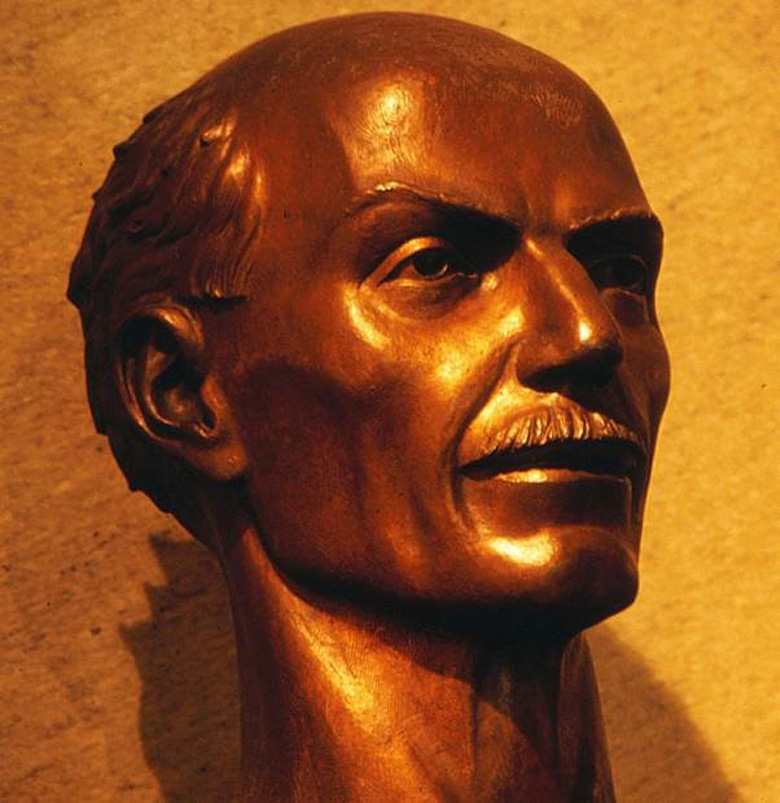
Roberto Biscaretti di Ruffia whose collection provided the foundation of today’s Italian National Motor Museum.Gauld photo.
It opened originally in 1960 and was named the National Automobile Museum but most of us back then always referred to it as the “Biscaretti” after its founder.
Despite its spectacular architecture, the Biscaretti fell into line with most collections and museums of the time. Take the floor measurements, line all the cars up side by side, put little white cards in front of them and that was about it. What made the Biscaretti popular was the sheer breadth of the cars, and in particular the racing cars which featured a lot of one-offs.
It was very static. If you wanted to photograph a specific car bits and pieces of all the cars around it crept into the picture. To show cars you need space.
During an earth tremor in the 1980s, a vertical crack appeared above the entrance. This was repaired but, it became clear that a rethink should take place, and as a result the museum was closed for a number of years and reopened in 2011 in its present form.
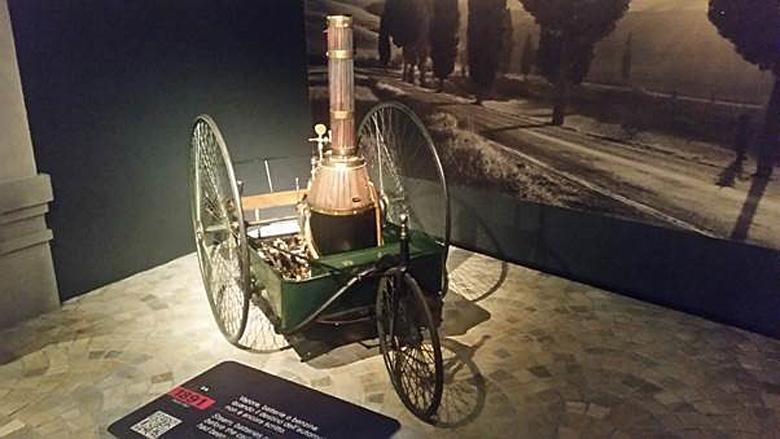
One of the museum’s prize exhibits; the 1891 Pecori steam tricycle built in Como by Enrico Pecori with a flat twin engine and its iconic steam boiler. It had chain drive to the rear wheels. Gauld photo.
The emphasis was on utilizing the extra space. Francois Confino, who was responsible for this, not only changed the entire look of the museum, but used every development in touch screen technology and themed areas that resulted in, not just a car museum, but an emotional roller coaster ride through the development of powered travel.
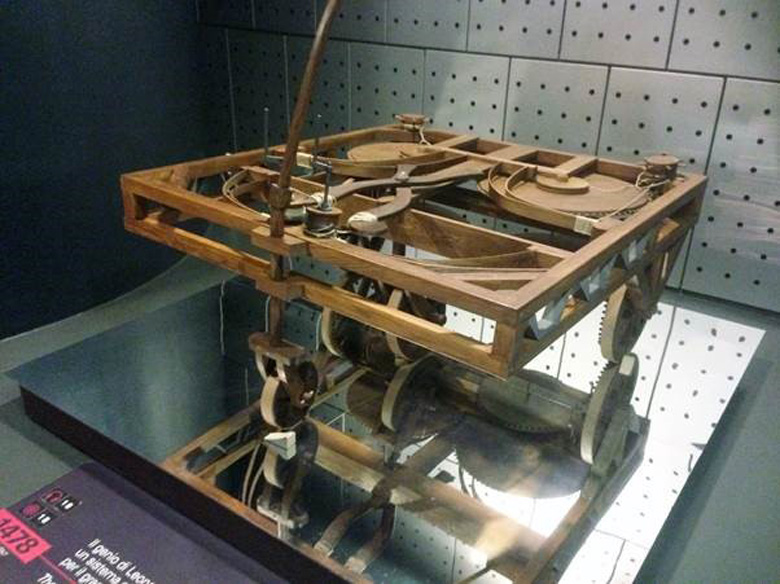
Leonardo da Vinci’s spring-driven engine drawing brought to life as a full-sized model. Photo Jane Wallis.
Confino went back to basics. Way back. Perhaps you have heard of Leonardo da Vinci’s drawing of a spring-driven engine. There is a full-size model of that engine; you can see the inventiveness involved using metal and wood. Nearby is an entire wall of models of other ideas from inventors you may never have heard of. Here, you can visualize what these designers were trying to achieve, even though the technologies of their day struggled to make the concepts actually work.
Car Design is another important element, and here again, the presentation is unique, stimulating and fascinating. For example, have you ever wondered about the car designers around the world and how they relate to each other? Here, by utilizing a couple of large empty walls, Confino has used horizontal lines, each one representing design studios such as General Motors, Pininfarina, Vignale, etc. and placed the names of the key designers through the years.
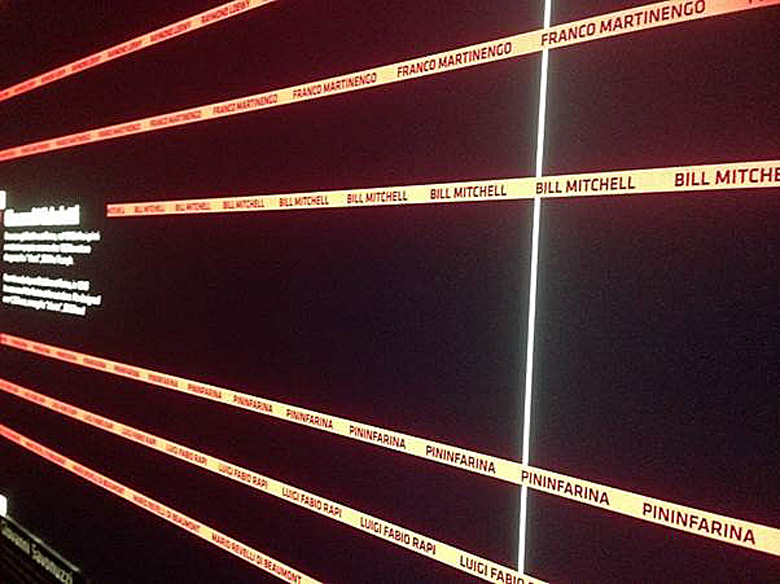
Note those “lifelines” of key designers including General Motors showing Bill Mitchell. Stretching over two walls, it brings the designer list up to date. Gauld photo.
Facing this is a moving description of the various key automobile shapes, showing how car aerodynamics have changed.
In one of the main areas, the entire floor has a complete photographic plan of Turin, with markers showing where every motor manufacturer, coachbuilder and designer created their work. It is only then you realize just how many companies Turin has hosted in the history of motoring.
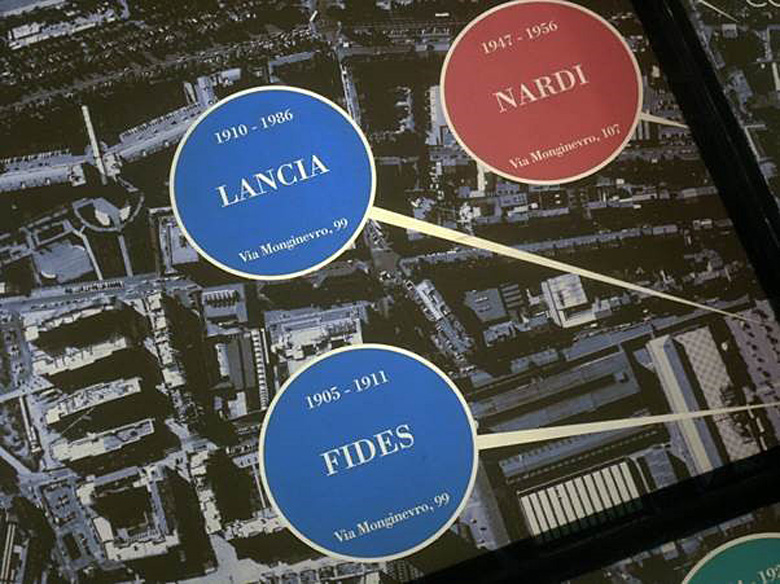
Here, for example is the street, Via Monginevro where No 99 was the home of the short-lived Fides car that folded in 1911. Note that when Gianni Lancia bought the Fides company he expanded the factory but kept the same address. Then a few meters further, at number 107, Enrico Nardi opened for business in 1947. Gauld photo.
If one attends the museum simply to see the great collection of 1950s era Grand Prix cars, perhaps one might feel that the ancient history of transportation and engines is of little interest. You can see a line-up of cars by stepping out of your front door; anyone who goes to this museum just to look at cars is missing out and will never understand why we have the cars we have today, and how they evolved. And in contrast to the auction circuit, the cars at MAUTO have no price tags affixed. To the museum they are invaluable to the understanding of automotive history and that is enough.
MAUTO has created a modern way in which to describe the complex areas of human development as the automobile and transport in particular. It describes it well and makes the experience more human and memorable. At the moment there is a special exhibition on the work of Marcello Gandini which blends in with another unique aspect of the museum.
Just a few months ago the Museum announced a new Director, Mariella Mengozzi, who is young and has the kind of infectious enthusiasm that any museum needs. She has had plenty of experience as she was head of the Ferrari Museum in Maranello for a number of years and was responsible for expanding its appeal and approach to displaying cars and racing cars.
Clearly, she has big plans for the future and is aiming to expand the influence of the Italian Motor Museum, now shortened to MAUTO, by joining forces with other motor museums in joint ventures. The entire concept of museums is changing and MAUTO is one of the most modern, leading the challenge of the future. However, at the moment she is in the middle of making arrangements for what is likely to be one of the most important projects to date, the celebration of the 70-year history of Grand Prix Formula 1 in 2020. There is no doubt it will be a spectacular affair and a great reason to go and visit.
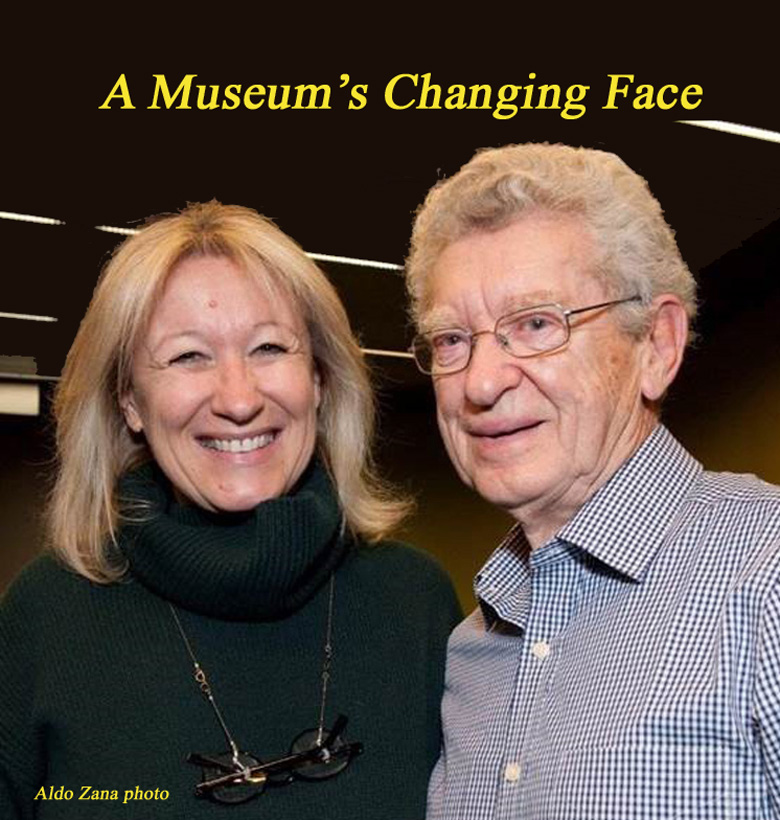
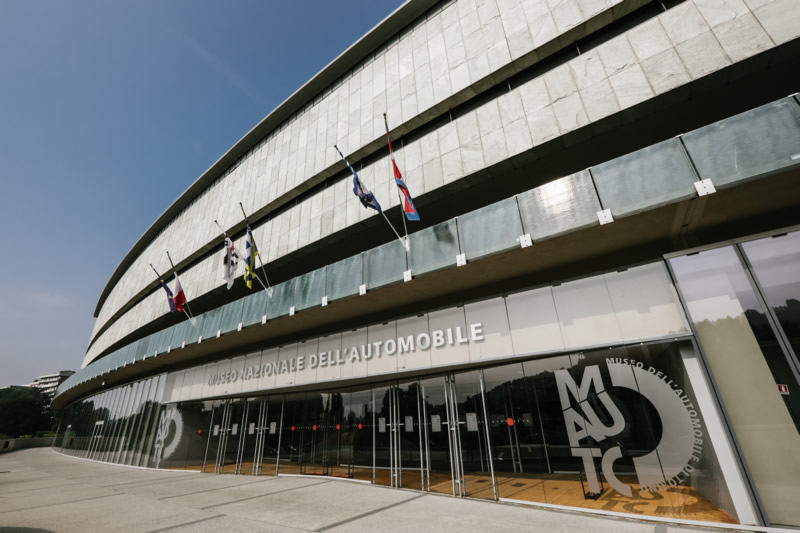
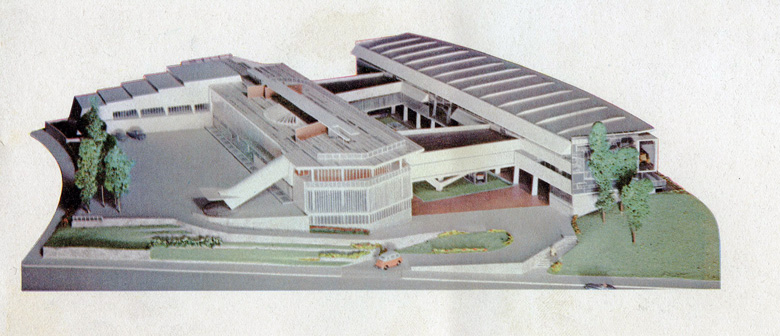
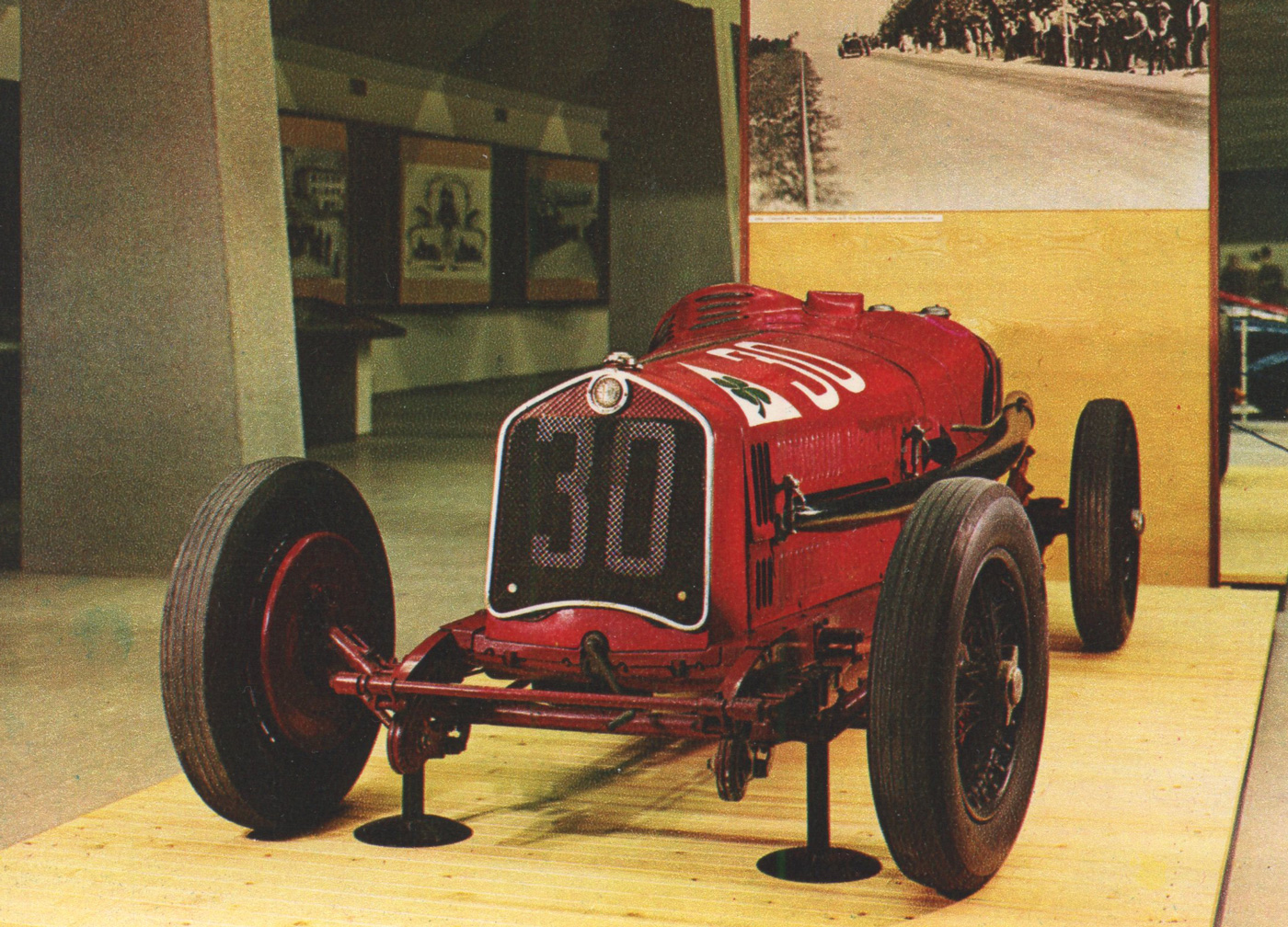
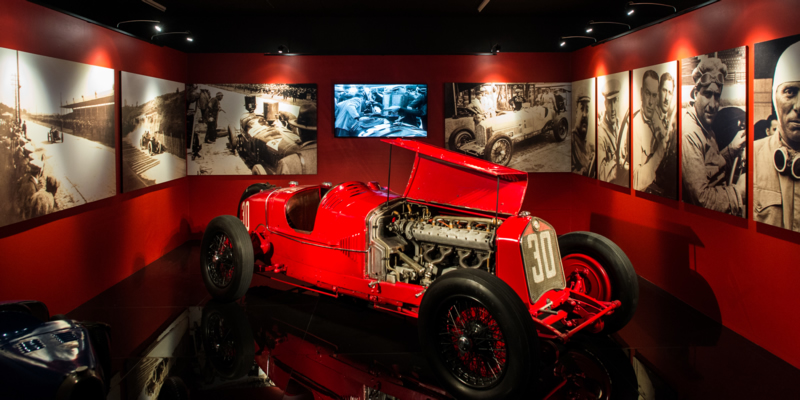

Since Lancia has ceased production and has, somewhere, a chronologically complete collection of cars, it would be beneficial to have that collection at MAUTO